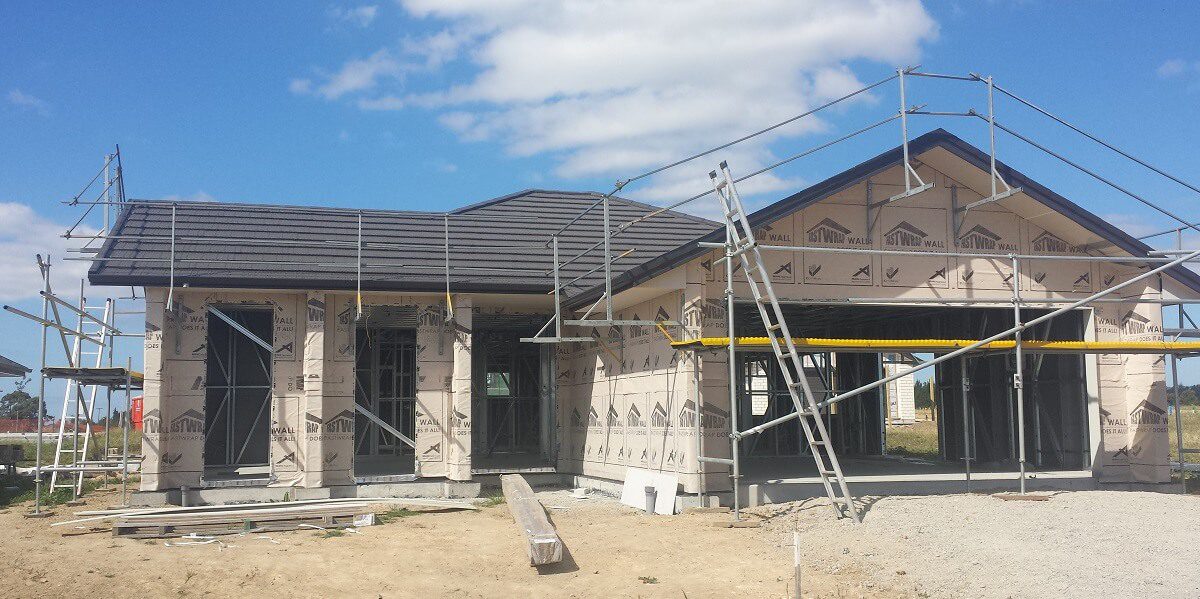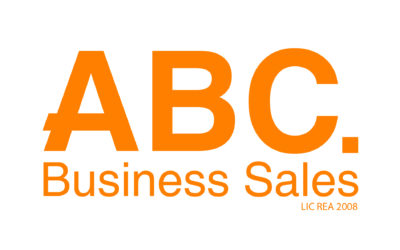In this piece we outline what we think the sector is going to experience over the coming year and what you can do to both be prepared for threats and take advantage of opportunities.
The tone of this assessment is underlined by our inherent optimism in construction as a vibrant and robust industry with strong fundamentals, albeit subject to the economic ebbs and flows that we have all experienced over the decades.
As a risk-focused business we believe that being prepared for challenges (in our language that means identifying and mitigating risks) allows businesses to better ride out difficult periods. They offer a chance to focus on what’s most important, identify and target areas of opportunity and improve your overall business health. Good operators will always survive and come out stronger when the tide turns.
Over the next 12-24 months business operators should closely monitor their key financial metrics, conducting more frequent updates with their financial advisers and accountants. This will serve as an early warning system and enable swift action to be taken if indicators start to turn negative.
Observations
Inflation
While there are signs recently of an easing in inflation from record highs a return to previously modest levels is likely to be at least 2 years away, with volatility over that period not helping provide the reasonable levels of certainty needed for consumers to re-enter the market. Consumer price index forecasts for 2023 range from 3.5% to 4.5%. Inflation in construction significantly outstripped the average in 2022 and this is expected to continue in 2023, albeit at a more modest level as well.
Interest Rates
The Reserve Bank is expected to increase the Official Cash Rate to a peak of 5.5% in April. However, if inflation figures and economic growth come in lower than expected the RBNZ may not see the need to push rates that high.
Just over half of all mortgages will roll over in 2023 and even if the Reserve Bank eases back from predicted rises in the OCR average mortgage interest rates will rise from 4% to around 6.5%. This will drain hundreds of dollars a week from the average mortgage holder’s available income, which will depress demand for construction services.
Input Costs
Construction material and labour costs continue to increase and while immigration controls are being relaxed in some sectors, this is unlikely to affect the availability of labour in the building industry. According to careers.govt.nz an experienced labourer usually earns between $25-$40 per hour. Average industry salary rates increased by 4.2% to the year ended June 2022, which is 23% higher than the average wage increase across all industries. Hourly earnings increased by 5.9% for the same period. There are a substantial number of apprentices and other workers entering training for the construction sector and this is likely to continue given the availability of jobs and good wages.
Industry Debt
According to Creditworks there has been an increase in arrears in 2022, with about 30% of debt in arrears compared to the norm at around 10%. This suggests builders are struggling to manage their cashflow. A significant cause of this is longer construction timeframes. While insolvencies in the construction sector were not significantly greater in 2022 than prior years these arrears are a strong indicator of challenging times ahead for the sector.
Forecast
Our assessment is that pipelines for 2023 are sufficiently full for most builders to have work through to at least Q4. Moving into 2024 the outlook is shakier, with the effects of inflation, interest rates, general economic uncertainty and an election in late 2023 all serving to put a dampener on forward demand.
Sales from group housing companies are estimated to be down 15-20%, with some down 30-50% vs the prior year. The impact of this is likely to be felt by the sector in late 2023 and into 2024 when these contracts would typically start construction.
Of the circa 50,000 residential consents issued in the 12 months to September 2022 43% were in Auckland. 76% of those consents in Auckland were for multi-unit homes, primarily townhouses, units and apartments. Of those issued consents 12,500 had not begun construction by December 2022. It is likely that a lack of available developer investment is behind these projects being delayed.
Renovations and alterations appear to still be going strong and may benefit from the slowdown in house sales and new builds.
Large commercial builds may be put on hold, however firms in this space should be well positioned to pivot towards a likely increase in Government funded infrastructure projects. Crown spending on infrastructure from 2022 to 2026 is budgeted at almost $62bn, an increase of $4.6bn from the 2021 budget. There are over 1,000 projects over $10m in the National Infrastructure Pipeline, which reported an increase of 6.5% on the total value of infrastructure projects in the pipeline between November and June 2022.
Opportunities
The key to weathering this cyclical slowdown will be taking appropriate action to mitigate risk and to pivot to where the opportunities are. This will ensure the business’s continued financial health by offsetting declines in “business as usual” operations driven by a broader economic downturn.
Stay Close To Your Customers
Reconnect with your customers, be helpful, listen to them. Don’t push, recognise that the work may not be there now, but it will be there in the future. This is how you will build trust and enhance your reputation. While larger projects may be postponed there can often be a latent desire to do something sooner, so a more modest scope of work could be appealing or a project split into stages. Be front of mind when the market improves and customers are ready to spend again.
Be Visual
Don’t sit back in your bunker, get out there and be visible. Can you start or contribute to some local projects that will generate goodwill? Sponsorship at a local level, such as with sports clubs and other organisations, can be very cost effective and will pay off as other sponsors withdraw. What is your site signage like? This is a good opportunity to revamp it.
Increase Communication
Again, this is about being seen to be helpful to your market. For larger firms this may include publishing content via LinkedIn. For smaller builders, can you produce a newsletter and distribute this locally? This can also be a good chance to build a portfolio of past projects and testimonials from satisfied customers and then update your website and social media content. Do you know all your local architects and other specifiers, and more importantly, do they know you?
Review Your Target Market
Reassess what you’re best at and focus on that area. When the work comes easy there are often lots of untapped opportunities that can be mined when times get tougher. Do you have a particular area of expertise or work that you especially enjoy or is more profitable? Tailor your communication to these areas. Identify and target niches. Often a specific message aimed at a smaller market is more effective in unlocking opportunities than more generic messaging to a wider audience. For example, refitting spare bedrooms into home offices, or building detached home office spaces.
Conversely, are there other areas that you have the skillset to go after? Could you target commercial fit outs in addition to residential renovations? Do you have the space, time and capital to build and sell tiny homes given the continued growth in this market?
Add Value
This could be little things that don’t cost much money but have a big impact on how customers perceive you. Do you supply maintenance guidelines (as you’re required to do) in a format that is easy for customers to refer to? Do you offer a maintenance service or schedule post-completion reviews/walk throughs? Sending scheduled reminders to clients when their maintenance is due is, or recommending services such as Gtee (gteeco.com), is often very much appreciated and could prompt additional work.
Cut Costs Smartly
Examine your costs and look for areas that can be trimmed or renegotiated. It’s better to be doing this in advance than having to be reactive when cashflow is under pressure. Do you have sufficient financial expertise to know how your business is really doing, or are you supported by professionals that will give you this advice in a timely manner? What types of projects have the best margins? Do you have too many vehicles? Can you sell some and switch to a leased approach? Are there inefficiencies in your build programme that can be tidied up? Can you re-tender or renegotiate your subcontract work, including adding penalties for poor performance, such as cancellations and delays that cost you money?
Take Advantage of Trends
As the sector slows in general there are always pockets of work that buck this trend and will be growing. If you can take advantage of these trends then your business will do well even as the overall market struggles.
Zero/Low Carbon Emission Buildings
Occupier demand for green/sustainable commercial buildings is growing. The same trend exists for residential homes, with Homestar rated buildings up 76% between 2020 and 2021. There are a number of institutional investors and funds that are focused on this area, Government regulation is likely and Government funded projects are likely to include sustainability requirements. This includes both the construction of new and retrofitting of existing buildings. Can you position your business to be well placed to win contracts in this growing market?
Medium Density Housing
The demand for apartments and other multi-unit homes has increased significantly over the past decade and this trend is likely to continue. Can you pivot your business from standalone homes towards one or more of the categories of multi-unit buildings: 1-2 storey duplex and semi-detached attached houses; 2-4 storey terraced housing and 3-6 storey apartments?
Accessible Buildings
In New Zealand 1.1 million people (around 24% of the population) are reported to have a disability (this could be both a permanent or temporary condition). Globally, there is an increasing trend towards designing buildings that are accessible for people with a disability, with regulatory rules existing here that require “reasonable and adequate provisions” be made for persons with disabilities. As the population ages more homes will need to include accessible facilities. Can you position your business as an expert in accessibility solutions, including new buildings and retrofitting existing dwellings and commercial premises?
Tiny Homes/Modular Construction
Demand for tiny homes is likely to continue to increase, as is the move towards modular and offsite construction. It is anticipated to grow from 5% to 15% of the market in the coming years. Can you position your business to take advantage of this trend?
Digitisation
Adoption of digital technology in the construction sector aims to improve experience for clients during the design phase, as well as being able to manage sites, monitor health & safety and quality control. Tenders, designs and workplaces that incorporate this technology will stand out from the crowd, as well as improving return on investment over both construction phase and the building’s life.
New Energy Sources for Domestic Buildings
Clean, sustainable and locally generated energy is increasing in both importance and demand from consumers. Adding value by suggesting alternative options to traditional energy sources will help differentiate you from the market. This could include solar but extend to hydrogen storage, sand batteries and bladeless turbines.
Waste-based Construction
New Zealand’s Emissions Reduction Plan requires that by 2050 we have “a circular economy that keeps materials in use for as long as possible”. This could include using building waste to produce new building products and waste plastics being incorporated into concrete and non-structural panels. SaveBoard upcycles packaging to produce building materials such as internal linings with much less embedded CO2 to standard alternatives. Both customer demand and regulation are likely to increase demand for these materials, can you adopt and promote these as an aspect of your business?
Conclusion
While the figurative seas ahead may look choppy if your business is sturdy and well led it will weather these challenges and come out the other side stronger. Our main message is to be proactive and make decisions before they are forced on you. Re-evaluate your business, make sure you have good understanding of the risks you face and have plans in place to manage these. Seek professional advice to assist where you need it and position yourself to take advantage of opportunities.
This article was written by Ben Rickard, Construction Risk Adviser and Director at Builtin Insurance Brokers. Builtin have more than 2,500 customers nationwide and 20 years experience providing insurance and risk management services to the construction industry.
References
https://www.mbie.govt.nz/dmsdocument/25439-building-construction-sector-trends-annual-report-2022
https://www.newsroom.co.nz/what-2023-has-in-store-for-the-new-zealand-economy




